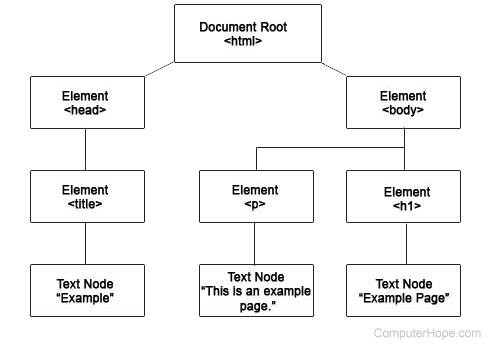DOM
The DOM (document object model) is an API (application programming interface) that exposes the elements of HTML (hypertext markup language) and XML (extensible markup language) documents as programming language objects. The structure of the DOM for any document resembles the actual structure of the markup of the document. A web developer can programmatically manipulate the DOM to modify a web page, before or while it is viewed by the user.
The most common programming language used in the DOM is JavaScript, which is used on most websites. Using JavaScript allows dynamic changes to be made to the DOM, including hiding, moving, and animating certain HTML elements (such as text, tables, images, and entire divisions).
In the past, the DOM had fundamental differences between browsers, but today has become more standardized, allowing for easier cross-browser scripting to be performed by developers.
A DOM example using HTML
Consider the following HTML document:
<html> <head> <title>Example</title> </head> <body> <h1>Example Page</h1> <p>This is an example page.</p> </body> </html>
The DOM for this page includes all the elements and any text nodes in those elements. The code in the previous example creates an object hierarchy as shown below.

For each element under the document root (<html>), there's an element node, and these element nodes have text nodes containing the text that's in the element. If there were an element with attributes, an attribute node would be created for that element. Any text for the attribute would create a text node under that attribute node.
